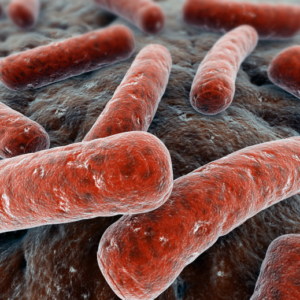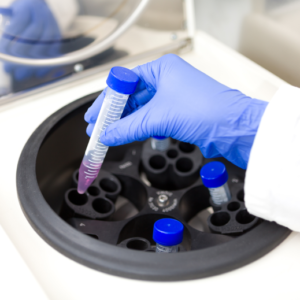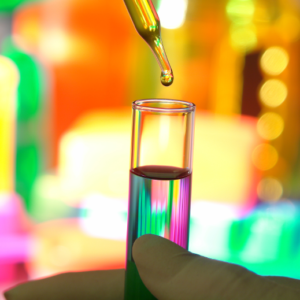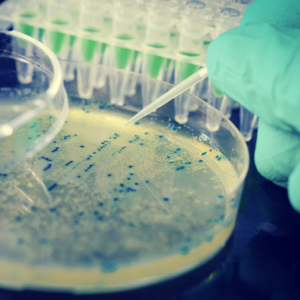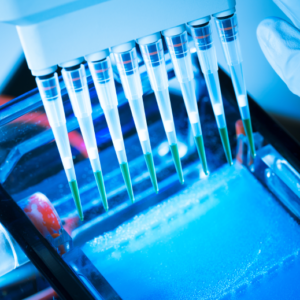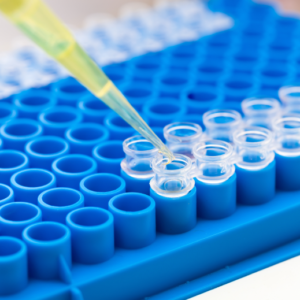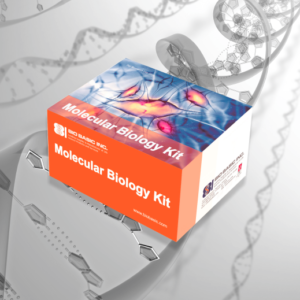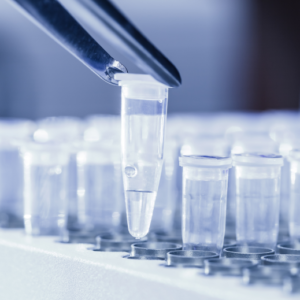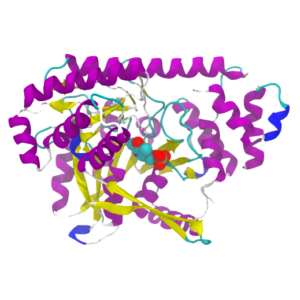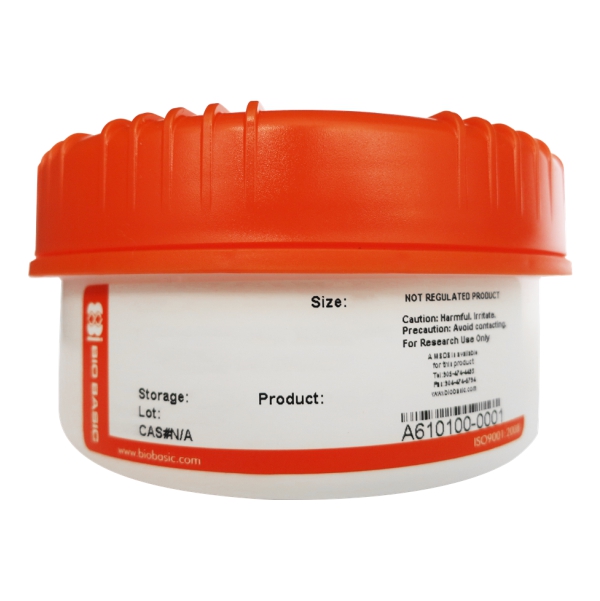Lysozyme: Synonyms: Muramidase; Lysozyme c; Mucopeptide N-acetylmuramoylhydrolase
Description: Lysozyme is a single chain polypeptide of 129 amino acids cross-linked with four disulfide bridges. It hydrolyzes ß(1→4) linkages between N-acetylmuraminic acid and N-acetyl-D-glucosamine residues in peptidoglycan and between N-acetyl-D-glucosamine residues in chitodextrin. The enzyme is often used for lysing bacterial cells by hydrolyzing the peptidoglycan present in the cell walls. Gram-positive cells are quite susceptible to this hydrolysis as their cell walls have a high proportion of peptidoglycan. Gramnegative bacteria are less susceptible due to the presence of an outer membrane and a lower proportion of peptidoglycan. However, these cells may be hydrolyzed more easily in the presence of EDTA that chelates metal ions in the outer bacterial membrane.
This lysozyme preparation is purified from chicken egg white, crystallized three times, dialyzed, and supplied as a lyophilized powder. Protein content by UV absorbance is ≥90% with the remainder (~10%) being buffer salts such as sodium acetate and sodium chloride. This highly purified enzyme preparation has been used in mass spectrometry as a protein mass calibration standard and in structural studies of proteins. It is suitable for use as a lysing agent in the purification of plasmid DNA using a boiling lysing technique.
Molecular mass: 14,307 Da (amino acid sequence) Isoelectric point (pI): 11.35
Extinction co-efficients:
E 1%(281.5 nm): 26.4 in 0.1 M potassium chloride
E mM(280 nm): 36
Optimal pH: The activity of lysozyme is a function of both pH and ionic strength. The enzyme is active over a broad pH range (6.0–9.0). At pH 6.2, maximal activity is observed over a wider range of ionic strengths (0.02–0.100 M) than at pH 9.2 (0.01–0.06 M).
Inhibitors: Lysozyme is inhibited by indole derivatives, which bind to and distort the active site, and imidazole, which induces the formation of a charge-transfer complex. It is also inhibited by surface-active agents such as sodium dodecyl sulfate, sodium dodecanate, and dodecyl alcohol. Other compounds of these types with carbon chains of 12 or more carbons in length will also inhibit lysozyme.
Substrates: The natural substrate for lysozyme is the peptidoglycan layer of bacterial cell walls. However, a variety of low molecular mass substrates including murein degradation products as well as synthetic compounds have been used for various photometric, isotopic, and immunological lysozyme assays.
The following low molecular mass lysozyme substrates are available: 4-Methylumbelliferyl β-D-N,N’,N’’-triacetyl-chitotrioside (a fluorogenic substrate) 4-Nitrophenyl β-D-N,N’,N’’-triacetylchitotriose.
Lysozyme activity: ≥20,000 units/mg protein
Unit definition: One unit will produce a change in A450 of 0.001 per minute at pH 6.24 at 25 °C, using a suspension of Micrococcus lysodeikticus as substrate, in a 2.6 ml reaction mixture (1 cm light path).
Lysozyme
£683.00 exc. VAT
100g
| CAS | [12650-88-3] |
|---|---|
| Grade | Biotech |
| HS Code | 3507.90.0090 |
| Manufacturer | Bio Basic |
| Pack Size | 100g |
| Shipping Conditions | ICE |
| Sterile | yes |
| Storage Conditions | (-15 to -20)C |
| UNSPSC Category | Glycosidases |
| UNSPSC Code | 12352204 |
| DG | |
| Hazard Class | |
| Hazard UN |

